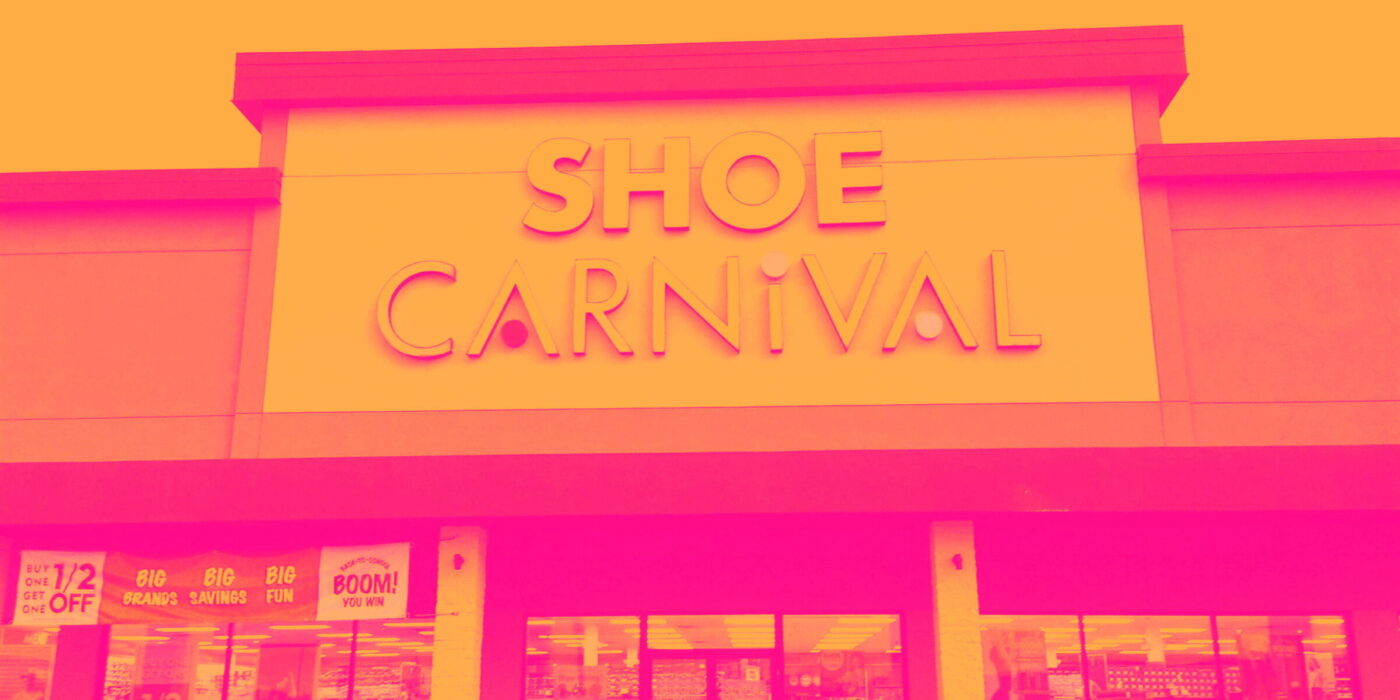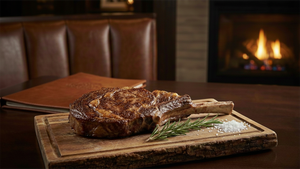
Footwear retailer Shoe Carnival (NASDAQ: SCVL) missed Wall Street’s revenue expectations in Q2 CY2025, with sales falling 7.9% year on year to $306.4 million. The company’s full-year revenue guidance of $1.14 billion at the midpoint came in 1.9% below analysts’ estimates. Its GAAP profit of $0.70 per share was 15.4% above analysts’ consensus estimates.
Is now the time to buy SCVL? Find out in our full research report (it’s free).
Shoe Carnival (SCVL) Q2 CY2025 Highlights:
- Revenue: $306.4 million vs analyst estimates of $314.1 million (7.9% year-on-year decline, 2.5% miss)
- EPS (GAAP): $0.70 vs analyst estimates of $0.61 (15.4% beat)
- Adjusted EBITDA: $33.65 million vs analyst estimates of $30.1 million (11% margin, 11.8% beat)
- The company dropped its revenue guidance for the full year to $1.14 billion at the midpoint from $1.19 billion, a 4.6% decrease
- EPS (GAAP) guidance for the full year is $1.90 at the midpoint, beating analyst estimates by 4.8%
- Operating Margin: 8.2%, in line with the same quarter last year
- Same-Store Sales fell 7.5% year on year (-2.1% in the same quarter last year)
- Market Capitalization: $707.7 million
StockStory’s Take
Shoe Carnival’s second quarter results drew a notably positive market response, despite missing Wall Street’s revenue expectations. Management attributed the earnings outperformance to decisive margin expansion, supported by disciplined pricing, a strategic inventory build, and a deliberate shift toward higher-income customers through the Shoe Station banner. CEO Mark Worden cited the company's margin-first strategy and robust performance in premium product categories as key factors, stating, “We captured success at a lower cost basis and strength at a higher margin run first.” The quarter’s profitability came as the company steered away from aggressive promotions, instead focusing on improving product mix and reducing exposure to more volatile, lower-income segments.
Looking ahead, Shoe Carnival’s guidance reflects management’s continued confidence in its rebanner strategy and targeted customer migration. The company plans to accelerate the conversion of stores to the Shoe Station format, with the expectation that this banner will comprise the majority of the fleet by next back-to-school season. Management acknowledged ongoing macroeconomic uncertainty, especially for lower-income consumers, but believes that maintaining pricing discipline and focusing on premium brands will underpin future margin resilience. CFO Patrick Edwards emphasized, “We expect gross profit margins to remain structurally higher due to the rebanners and disciplined pricing, even as traffic volatility continues outside of key selling periods.”
Key Insights from Management’s Remarks
Management credited the quarter’s margin expansion and earnings beat to execution on its rebanner strategy, inventory positioning, and a marked shift toward higher-margin banners serving more affluent customers.
- Rebanner strategy accelerates shift: The continued rollout of Shoe Station stores, now about 20% of the company’s fleet, is drawing higher-income shoppers who favor premium brands, helping lift overall product margins and reduce reliance on more price-sensitive customers.
- Inventory investments drive availability: Management strategically increased inventory, particularly in key categories such as children’s and athletic footwear, to ensure strong in-stock positions during the crucial back-to-school period. This move improved sales capture and supported margin expansion.
- Margin discipline over volume: The company prioritized profitability over chasing sales volumes, especially in the lower-income Shoe Carnival banner, resisting deep discounting even as competitors became more promotional. This approach protected margins but contributed to a year-over-year sales decline in the Carnival segment.
- Category and banner performance diverge: Shoe Station delivered high single-digit sales growth and notable margin improvements, with the children’s and adult athletics categories outperforming. In contrast, the Shoe Carnival banner saw sales decline as the company managed it primarily as a cash generator during the transition.
- Leadership team strengthened: The return of long-tenured executive Kerry Jackson to the leadership team was highlighted as a support for ongoing strategic initiatives, adding experience as the company navigates its transformation and considers disciplined acquisitions to further elevate customer demographics.
Drivers of Future Performance
Shoe Carnival’s outlook is shaped by its ongoing rebanner conversions, inventory strategy, and a focus on premium customer segments amid choppy consumer demand.
- Banner mix transformation: Management expects Shoe Station to surpass half the store fleet by next year’s back-to-school season, shifting the company’s core toward higher-income, brand-focused consumers. This mix change is anticipated to gradually offset sales declines in the legacy Shoe Carnival banner and drive more stable, profitable growth.
- Inventory normalization amid uncertainty: Elevated inventory levels, built for strategic reasons, are expected to be worked down as supply chain and tariff clarity improve. Management believes these inventory positions will not erode margins in the near term, due to the focus on high-margin, in-demand products and opportunistic buys.
- Tariff and pricing impacts: The company is preparing for potential cost increases from tariffs, particularly on imports from China and Vietnam. Early indications suggest wholesale price increases from suppliers of 5-7%, which management plans to address through selective product pricing and ongoing margin management.
Catalysts in Upcoming Quarters
In the coming quarters, the StockStory team will be monitoring (1) the pace and profitability of Shoe Station conversions relative to the declining Shoe Carnival banner, (2) the effectiveness of inventory management in maintaining margins as excess stock is sold down, and (3) the impact of tariff-related cost pressures on both pricing and demand. The ability to attract higher-income customers while executing disciplined brand and category management will be critical milestones for tracking the success of Shoe Carnival’s ongoing transformation.
Shoe Carnival currently trades at $25.93, up from $21.51 just before the earnings. Is the company at an inflection point that warrants a buy or sell? The answer lies in our full research report (it’s free).
Stocks That Trumped Tariffs
When Trump unveiled his aggressive tariff plan in April 2025, markets tanked as investors feared a full-blown trade war. But those who panicked and sold missed the subsequent rebound that’s already erased most losses.
Don’t let fear keep you from great opportunities and take a look at Top 9 Market-Beating Stocks. This is a curated list of our High Quality stocks that have generated a market-beating return of 183% over the last five years (as of March 31st 2025).
Stocks that made our list in 2020 include now familiar names such as Nvidia (+1,545% between March 2020 and March 2025) as well as under-the-radar businesses like the once-small-cap company Exlservice (+354% five-year return). Find your next big winner with StockStory today.
StockStory is growing and hiring equity analyst and marketing roles. Are you a 0 to 1 builder passionate about the markets and AI? See the open roles here.






